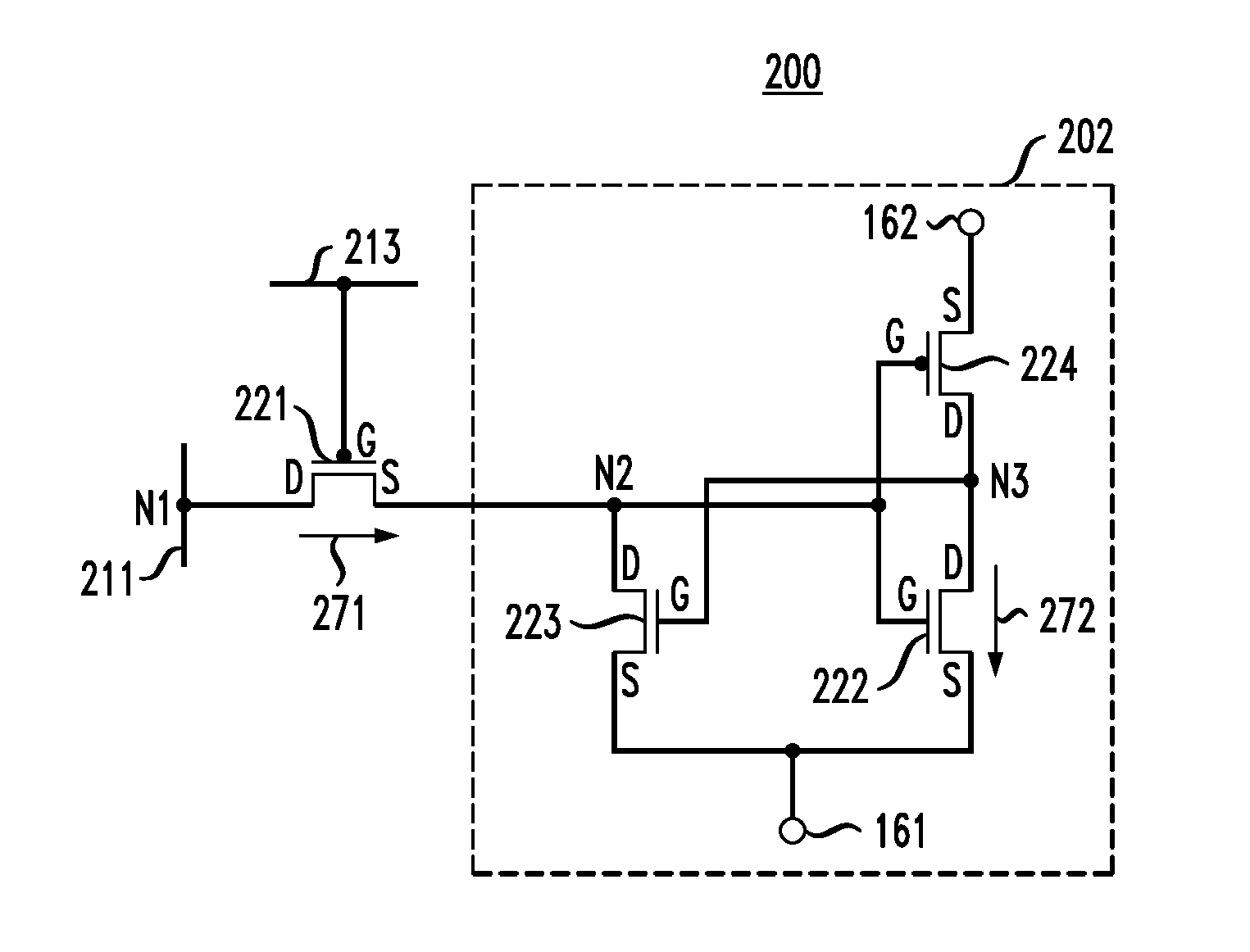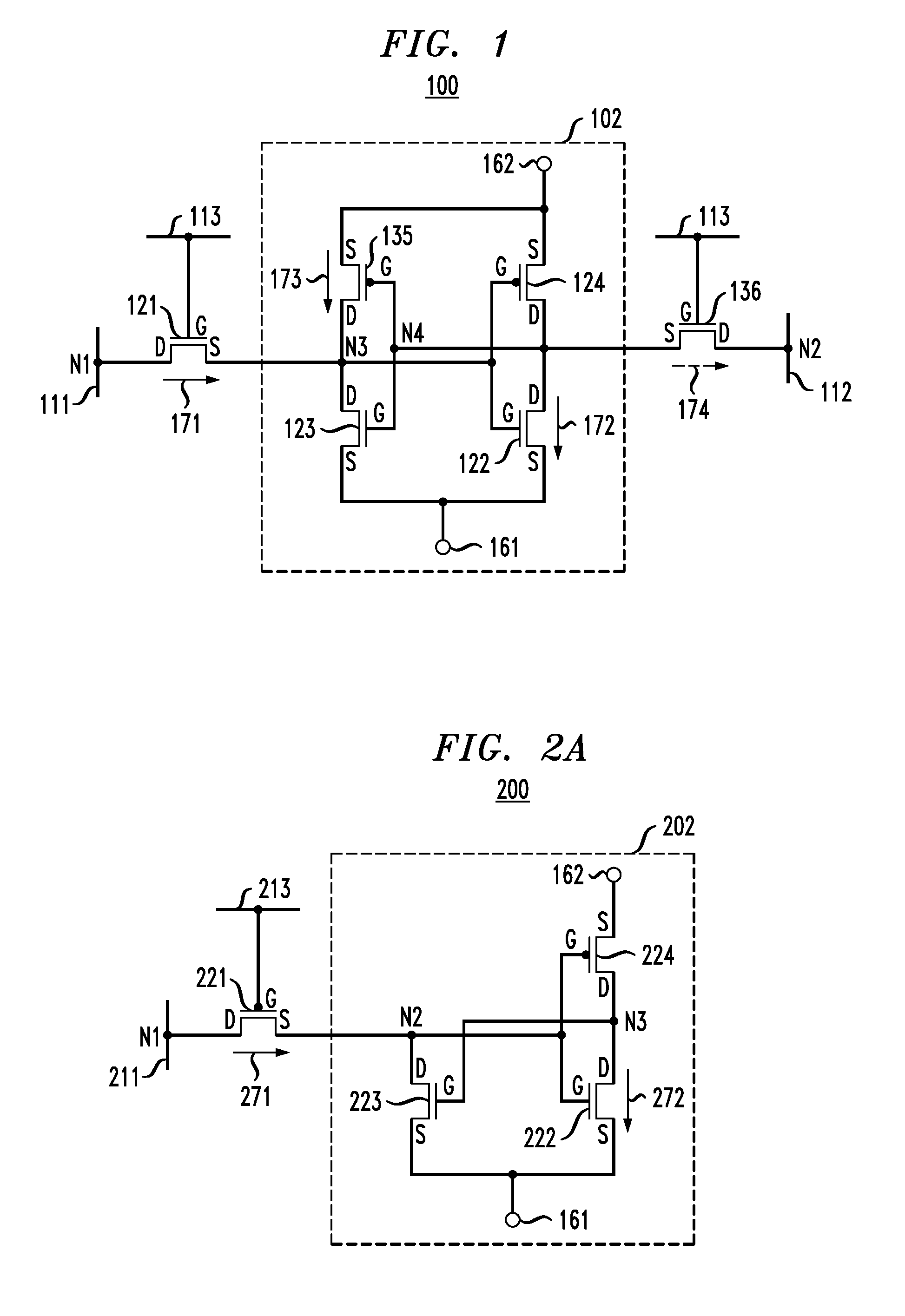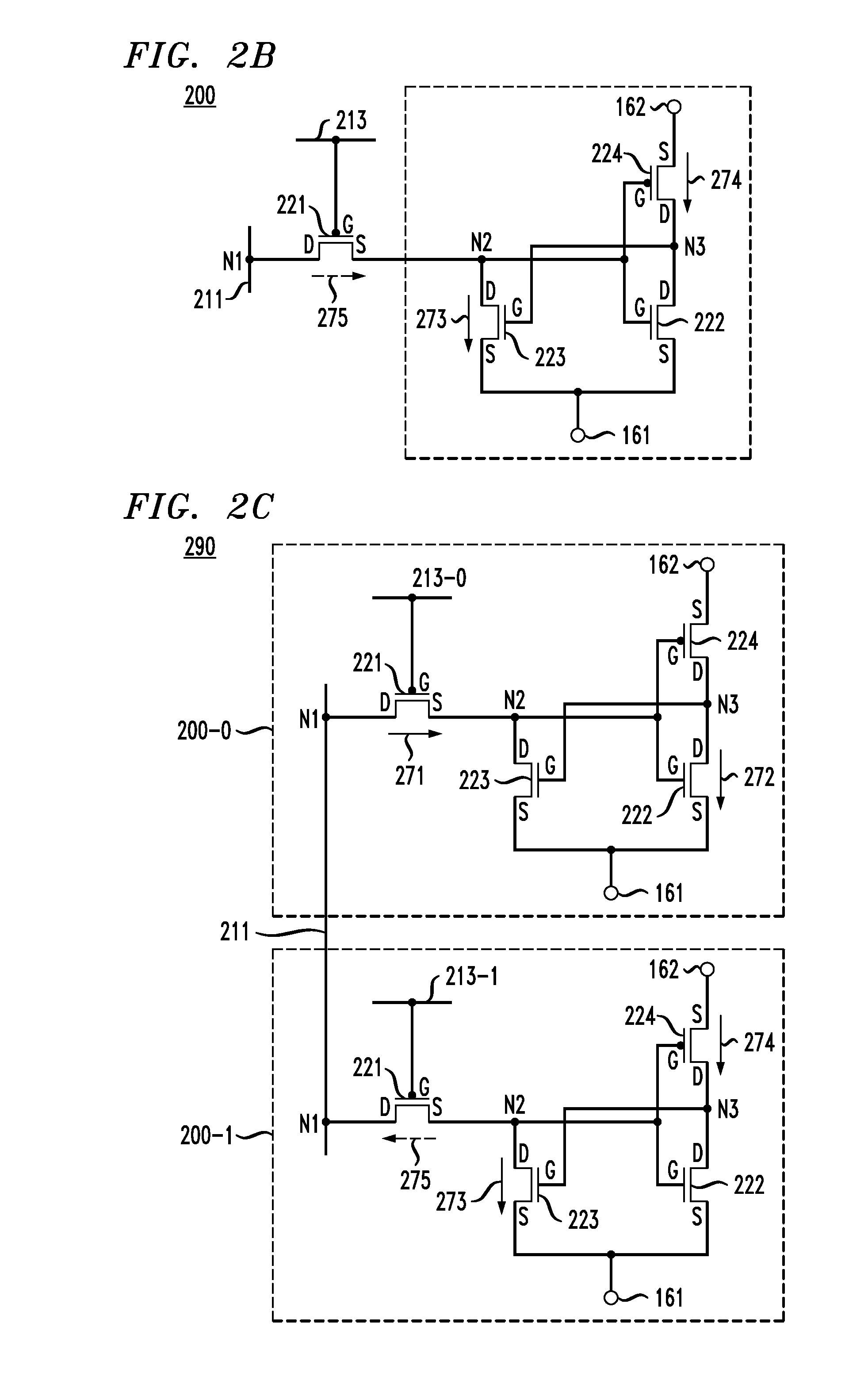Memory Cell Using Leakage Current Storage Mechanism
a leakage current and storage mechanism technology, applied in the field of memory cells, can solve the problems of increased leakage current, no useful purpose in most conventional ics, and leakage current within, and achieve the effect of enhancing the stability of four-transistor memory cells and less susceptibl
- Summary
- Abstract
- Description
- Claims
- Application Information
AI Technical Summary
Benefits of technology
Problems solved by technology
Method used
Image
Examples
Embodiment Construction
Aspects of the present invention will be described herein in the context of illustrative embodiments of a four-transistor (4T) SRAM cell adapted to utilize leakage current as a storage mechanism for reducing a size of the memory cell without significantly impacting performance of the cell. In accordance with other aspects of the invention, an exemplary memory circuit employing a plurality of memory cells and an illustrative method for forming a memory cell according to an embodiment of the invention are also described. It is to be appreciated, however, that the techniques of the present invention are not limited to the specific method and circuits shown and described herein. Rather, embodiments of the invention are directed broadly to techniques for beneficially utilizing leakage current in a memory cell in order to reduce a size of the cell without significantly impacting reliability or performance, or increasing overall current in the memory cell. For this reason, numerous modific...
PUM
 Login to View More
Login to View More Abstract
Description
Claims
Application Information
 Login to View More
Login to View More - R&D
- Intellectual Property
- Life Sciences
- Materials
- Tech Scout
- Unparalleled Data Quality
- Higher Quality Content
- 60% Fewer Hallucinations
Browse by: Latest US Patents, China's latest patents, Technical Efficacy Thesaurus, Application Domain, Technology Topic, Popular Technical Reports.
© 2025 PatSnap. All rights reserved.Legal|Privacy policy|Modern Slavery Act Transparency Statement|Sitemap|About US| Contact US: help@patsnap.com



